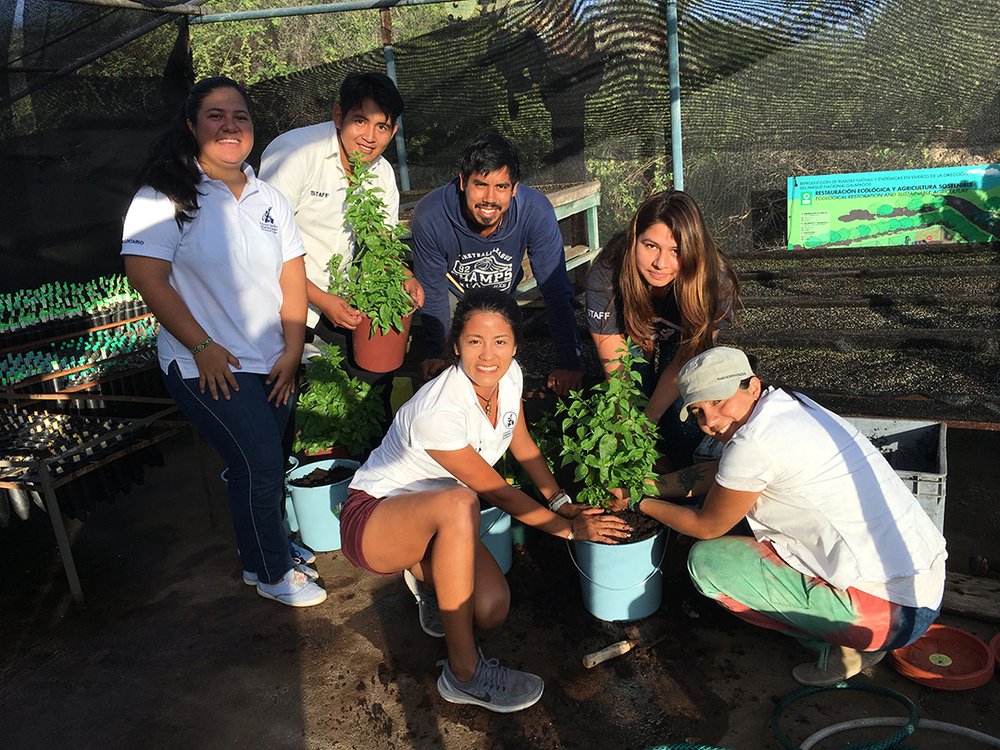
Historic records from the 1970s and 80s showed that the population number of Galvezia leucantha subsp. leucantha (an endemic subspecies of snapdragon) drastically declined on Isabela Island because of herbivory by introduced animals such as goats and rats (Wiggins & Porter, 1971; Tye & Jäger, 2000; León-Yánez et al., 2011; Guzmán et al., 2016).
In 2007, it was confirmed that only six individuals make up the entire population of G. leucantha on the island.
Due to the seriousness and urgency of this situation, in 2017 the Charles Darwin Foundation through the Galapagos Verde 2050 project, initiated the first restoration actions under their ecological restoration component. Seeds and cuttings were collected from the last five individuals confirmed in August 2017, which highlighted the urgency of the restoration actions for the conservation and recovery of the species.
The first attempts of ex situ reproduction (seed based) under control conditions and with solid, inert substrates were unsuccessful; thus, a pilot germination test was carried out on petri dishes using cotton linings as substrate. From these, the first seedlings of G. leucantha var. leucantha germinated in laboratory were obtained. There were many difficulties in obtaining seedlings. In addition to the reduced number of adults in their natural habtitat, the seeds had low fertility. This was evident, because of the 30 seeds used in the experiment, only nine germinated. These germinated seeds were transplanted to germination connes with inert substrate for the development of the root system. The seedlings remained in the germination cones for 35 days. Both the experimental phase and the growth protocol for the species were developed by Galapagos Verde 2050 research assistant Micaela Solís.
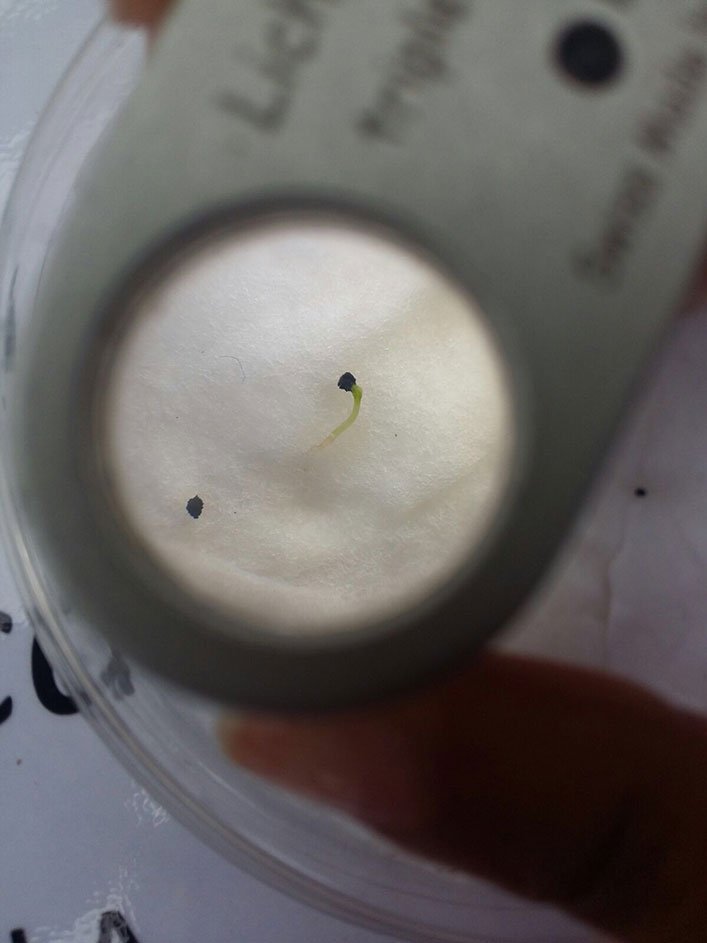
During the transplanting process of the 9 seedlings, only five survived the transplant. These five seedlings were rigorously supervised for four months, during which the seedlings underwent an adaptation process under conditions as close as to those encounter in their natural habitat. During the development and growth states of the seedlings, these were transplanted twice until the seven month of growth when the first flower buttons were observed. This was the biological indicator that the five seedlings were ready to be transported to their natural habitat.
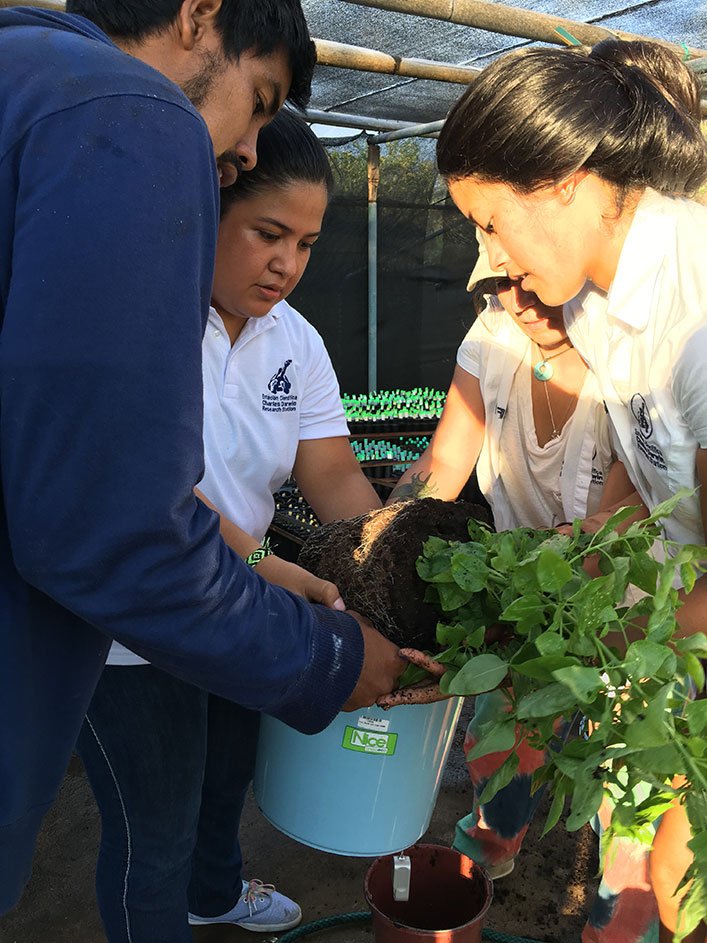
Only five seedlings survived and developed over four months, in which time they were submitted to an adaptation process to environmental conditions similar to those of their natural habitat in Northern Isabela. This whole process was only possible thanks to the dedication and passion of the research team, supervised by Micaela Solís and María Guerrero (International volunteer from Malaga University).
Following the quarantine and security protocols established by the Galapagos National Park Directorate and the support of the Biosecurity Agency (GBA) the five seedlings were transported to their natural habitat on Northern Isabela on March 19th, 2018. With the support of Lindblad Expeditions, the seedlings were transported on board of the Endeavour II towards Playa Tortuga Negra.
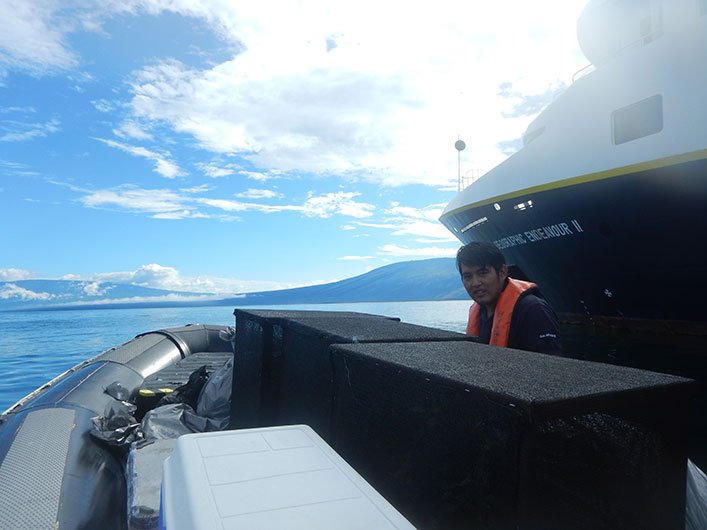
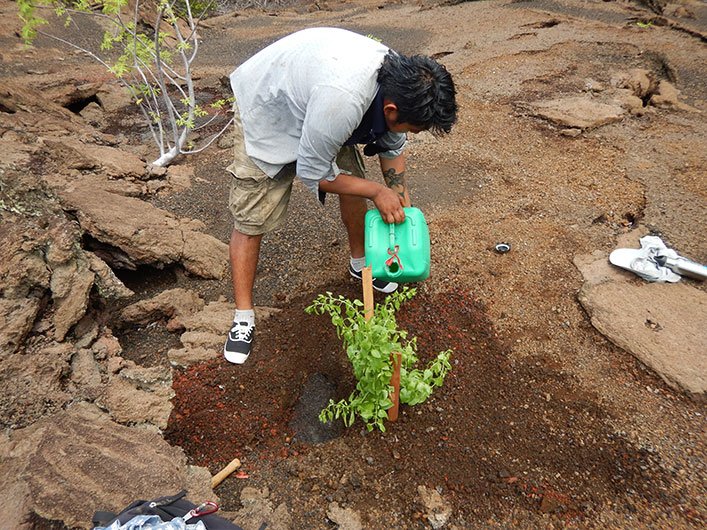
On the morning of the 20th of March, the five seedlings were planted with water saving technologies (Groasis and Hydrogel), Initiating in this way the first restoration actions of the endemic species G. leucantha var. leucantha on Northern Isabela. In this way we hope to increase its possibilities of survival. This was our first major success and the first step towards restoring the population of G. leucantha subsp. leucantha ,on Isabela Island.
Galapagos Verde 2050 is implemented by the Charles Darwin Foundation in collaboration with the Galapagos National Park Directorate. The project is carried out thanks to the valuable support of COmON Foundation, The Leona M and Harry B. Helmsley Charitable Trust & BESS Forest Club.
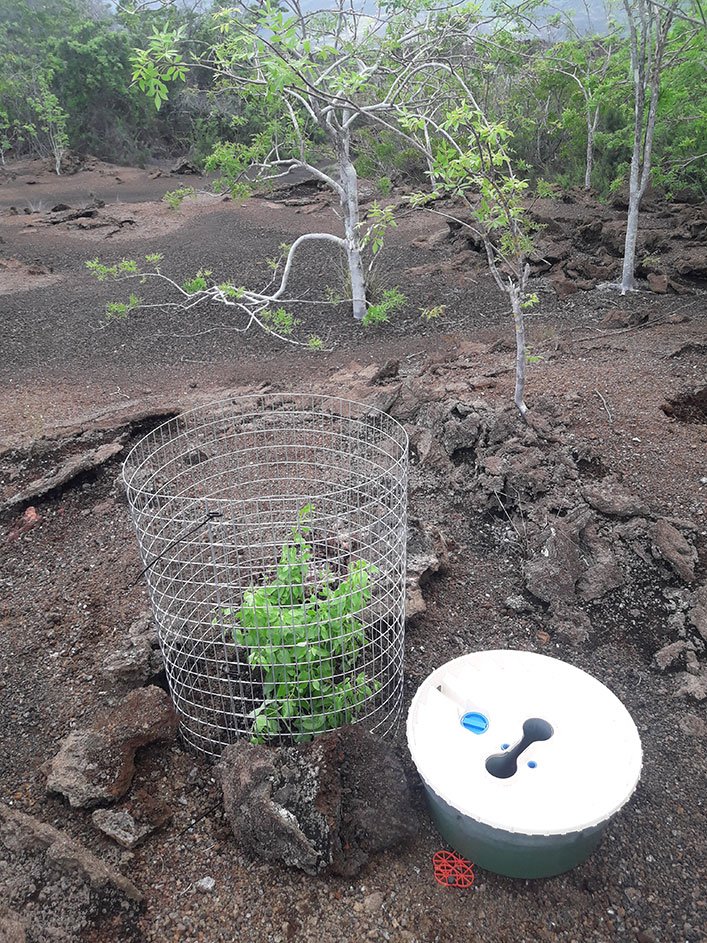
References:
Guzmán, B., Heleno, R., Nogales, M., Simbaña, W., Traveset, A. & Vargas, P. 2016. Evolutionary history of the endangered shrub snapdragon (Galvezia leucantha) of the Galápagos Islands. Diversity and Distributions, 1-14
León-Yánez, S., Valencia, R., Pitman, N., Endara, L., Ulloa, C. & Navarrete, H.(eds).2011. Librorojo de las plantas endémicas del Ecuador 2ª edición. Publicaciones del herbario QCA, Pontificia Universidad Católica del Ecuador, Quito, pp. 779.
Tye, A. & Jäger, H. 2000. Galvezia leucantha subsp. Porphyrantha (Scrophulariaceae), a new shrub snapdragon endemic to Santiago Island, Galápagos, Ecuador. Novon, 10: 164-168.
Wiggins, I.L. & Porter, D.M. Flora of the Galápagos Islands. (Stanford University Press, Stanford, CA, 1971).




